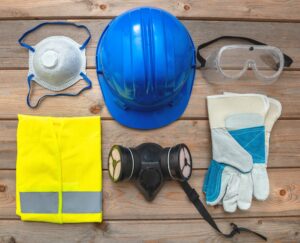A safety audit of your facility is a comprehensive evaluation of the workplace to identify and eliminate potential hazards. It’s a crucial aspect of ensuring the well-being of your employees, customers, and visitors. Regular safety audits help maintain a safe work environment, reducing the risk of accidents and promoting a positive health and safety culture in the workplace. In this article, we’ll explore the importance of conducting safety audits, and how to determine when it’s time to perform one.
Understanding the Purpose of Safety Audits
A safety audit is a systematic examination of a workplace to identify hazards and assess the overall safety of the environment. The objective of the audit is to eliminate or control any hazards that could result in accidents or injuries. The auditor examines the physical aspects of the workplace, such as equipment, machinery, and storage areas, as well as the processes and procedures that are in place to ensure safety.
The Benefits of Conducting Safety Audits
Conducting regular safety audits offers numerous benefits, including:
- Reduced risk of accidents and injuries: By identifying and controlling hazards, you can significantly reduce the risk of accidents and injuries in the workplace.
- Improved compliance with health and safety regulations: Regular safety audits help ensure that your workplace is in compliance with all relevant health and safety regulations, reducing the risk of fines and legal action.
- Enhanced workplace morale and productivity: A safe work environment promotes a positive health and safety culture, which can improve employee morale and increase productivity.
- Improved overall safety performance: Regular safety audits help you identify areas for improvement, allowing you to make changes that can enhance the overall safety performance of your workplace.
When to Conduct a Safety Audit
So, when is the best time to conduct a safety audit of your facility? There is no one-size-fits-all answer, as it depends on a number of factors, including the size and complexity of your facility, the number of employees, and the type of work being performed. However, there are some general guidelines that can help you determine when it’s time to perform a safety audit:
- Annually: It’s recommended to conduct a safety audit of your facility at least once a year, even if no major changes have taken place. This helps ensure that your workplace remains safe and in compliance with regulations.
- After a significant change: If you have made significant changes to your facility, such as the addition of new equipment or the implementation of new processes, it’s a good idea to conduct a safety audit to ensure that the changes have not introduced any new hazards.
- Following an incident: If an incident, such as an accident or near-miss, has occurred in your workplace, it’s important to conduct a safety audit to determine the root cause and identify any changes that need to be made to prevent similar incidents from happening in the future.
The Safety Audit Process
The safety audit process typically involves several steps, including:
- Preparation: In this step, the auditor prepares for the audit by reviewing relevant regulations and guidelines, and familiarizing themselves with the workplace and the processes in place.
- Walk-through inspection: The auditor conducts a walk-through inspection of the workplace, examining the physical environment and assessing the processes in place to ensure safety.
- Hazard identification: The auditor identifies any hazards that are present in the workplace, such as equipment in poor condition, inadequate lighting, or slip and trip hazards.
- Risk assessment: The auditor assesses the potential harm that each hazard could cause, and assigns a risk rating to each hazard.
- Recommendations: The auditor makes recommendations on how to eliminate or control each hazard, and provides a timeline for implementing the recommendations.
- Follow-up: The auditor follows up on the recommendations to ensure that they have been implemented and that the hazards have been effectively controlled.
Frequently Asked Questions
Here are some frequently asked questions about conducting a safety audit:
Q: Who can conduct a safety audit?
A: Safety audits can be conducted by a trained internal auditor, an external auditor, or a professional safety consultant.
Q: How long does a safety audit take?
A: The length of a safety audit depends on the size and complexity of your facility, but it can take anywhere from a few hours to several days to complete.
Q: Is a safety audit required by law?
A: While safety audits are not required by law in all countries, they are a best practice and are strongly recommended to ensure the safety of your workplace.
Conclusion
Conducting a safety audit of your facility is an important aspect of maintaining a safe work environment and reducing the risk of accidents and injuries. By understanding the purpose and benefits of safety audits, and knowing when to conduct one, you can ensure that your workplace remains safe and in compliance with regulations. Regular safety audits help maintain a positive health and safety culture, improving employee morale and increasing productivity. Make sure to perform a safety audit of your facility on a regular basis, and follow up on the recommendations to ensure that your workplace remains safe for everyone.








